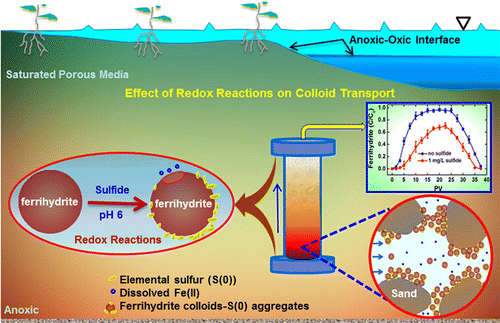Abstract

Transport of colloids in the subsurface is an important environmental process with most research interests centered on the transport in chemically stable conditions. While colloids can be formed under dynamic redox conditions, the impact of redox reactions on their transport is largely overlooked. Taking the redox reactions between ferrihydrite colloids and sulfide as an example, we investigated how and to what extent the redox reactions modulated the transport of ferrihydrite colloids in anoxic sand columns over a range of environmentally relevant conditions. Our results reveal that the presence of sulfide (7.8–46.9 μM) significantly decreased the breakthrough of ferrihydrite colloids in the sand column. The estimated travel distance of ferrihydrite colloids in the absence of sulfide was nearly 7-fold larger than that in the presence of 46.9 μM sulfide. The reduced breakthrough was primarily attributed to the reductive dissolution of ferrihydrite colloids by sulfide in parallel with formation of elemental sulfur (S(0)) particles from sulfide oxidation. Reductive dissolution decreased the total mass of ferrihydrite colloids, while the negatively charged S(0) decreased the overall zeta potential of ferrihydrite colloids by attaching onto their surfaces and thus enhanced their retention in the sand. Our findings provide novel insights into the critical role of redox reactions on the transport of redox-sensitive colloids in saturated porous media.

